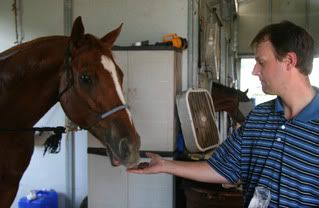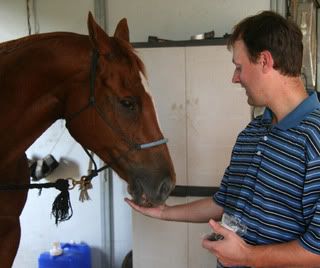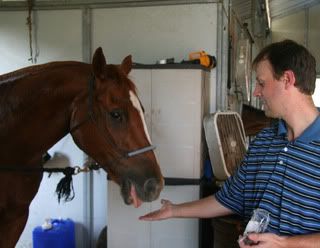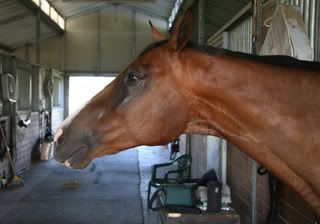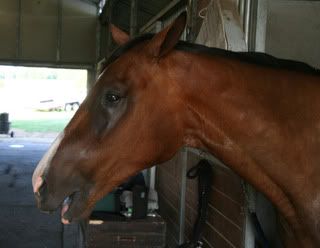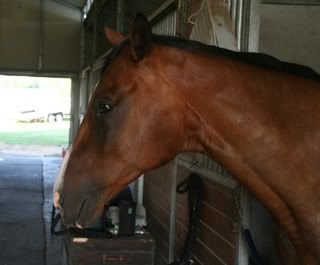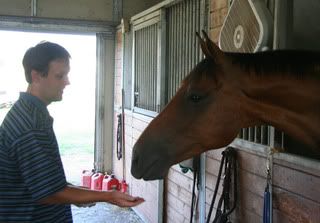So take one out to Dobbin if you get a chance. Happy holidays to all of you and give the ponies a smooch for me, as well. I cannot smooch my pony at present as I am three states away, sigh.
I hope you enjoyed our foray into equine nutrtion. Some disclaimers:
(1) This was not intended to be an end-all discussion of nutrition. My posts only cover a fraction of the variables which exist. Google is your friend.
(2) My perspective applies to the performance horse and specifically, to the eventer. Please do not give a fat supplement to Fatty McFatPony who lounges around in the backyard and gets toodled around on once a week. Both Fatty (in the long run, he will, anyway) and I thank you.
(3) I am fully supportive of fat supplements for people. Especially if they appear in the form of brownies or other heavily frosted items. If you cannot possibly bring yourself to eat them, please send them to me and I will be happy to take one for the team.
I hope you enjoyed our foray into equine nutrtion. Some disclaimers:
(1) This was not intended to be an end-all discussion of nutrition. My posts only cover a fraction of the variables which exist. Google is your friend.
(2) My perspective applies to the performance horse and specifically, to the eventer. Please do not give a fat supplement to Fatty McFatPony who lounges around in the backyard and gets toodled around on once a week. Both Fatty (in the long run, he will, anyway) and I thank you.
(3) I am fully supportive of fat supplements for people. Especially if they appear in the form of brownies or other heavily frosted items. If you cannot possibly bring yourself to eat them, please send them to me and I will be happy to take one for the team.
Lastly, please send a kind thought to our wonderful dressage instructor, P. She has laid to rest the mighty Reitz yesterday with a broken heart. This giant white mare was phenomenal, trained through Grand Prix dressage, and noble of heart and spirit. I was truly honoured to have sat on her and to have been tolerated by her. She is buried in her favourite paddock where she thoroughly enjoyed retirement until her aging legs could no longer hold her up. She joins our very special Ben in perfect freedom from pain forever.












